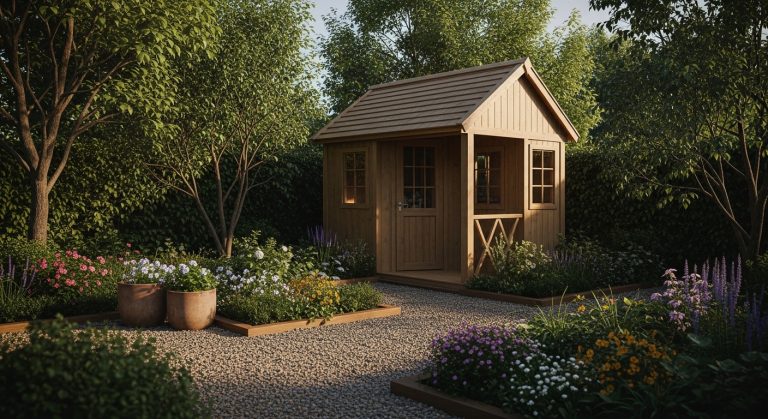Garden Sculpture Ideas: 15 Creative Ways to Bring Art into Your Outdoor Space
Let’s skip the boring intro and get straight to it: you know that moment when you walk into a garden and there’s something sitting there—bold, beautiful, unexpected—that makes you stop and really look?
That’s what a sculpture can do. I’ve been day-dreaming about garden art lately, and I truly believe adding a well-placed piece of sculpture can transform your outdoor space like nothing else. Whether you have a tiny patio or a sweeping backyard, I’m chatting with you as a fellow design-nerd about 15 different garden sculpture ideas that feel real, fun, and totally doable (yes, even if you’re not a millionaire).
1. The Focal Point Statue
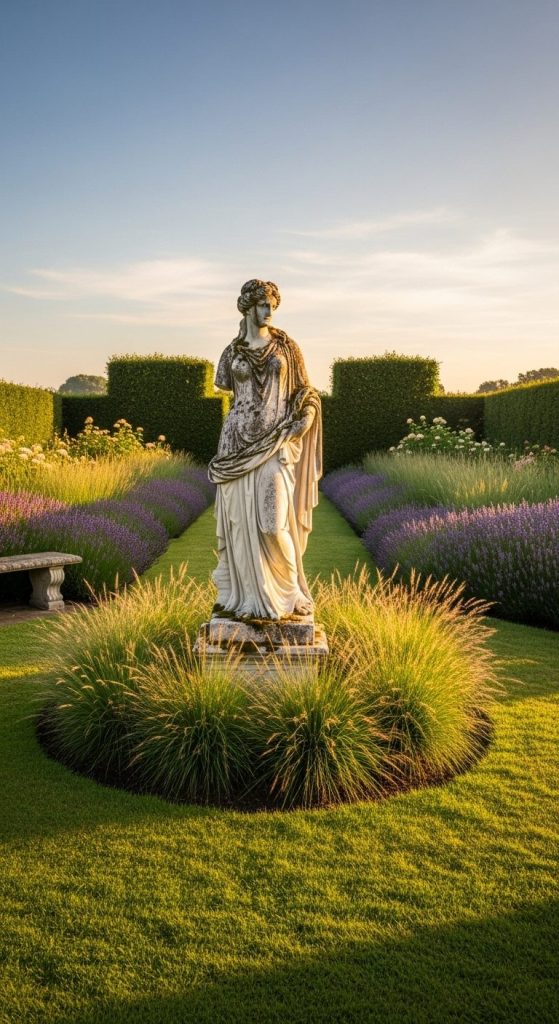
Imagine one strong sculpture placed in the centre of your lawn or at the heart of a garden bed—a single piece that stops people in their tracks.
Pros:
- Creates an immediate visual anchor or “hero” piece in your garden.
- Adds personality and story—everyone will ask “where did you get that?”
- Helps define the space, especially useful if you have a big, undefined outdoor area.
Cons:
- If too large or dominant, it can overwhelm the space or compete with your plants.
- High-quality sculptures can be expensive—so you might need to budget.
Takeaway:
If there’s one place where you want something to pop, this is it—go bold (but still suited to your scale).
2. Grouped Mini Sculptures
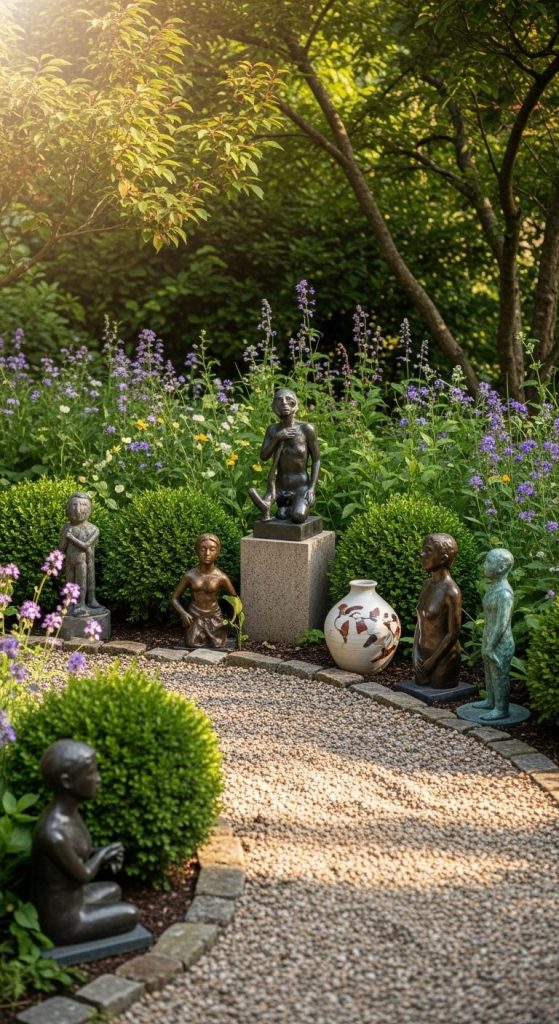
Rather than one big piece, picture a few smaller sculptures placed together—clustered near a path, tucked into shrubbery, or lining a wall.
Pros:
- Adds layered interest and movement; your eyes hop from piece to piece.
- Easier on the wallet—smaller sculptures cost less and you can build your collection over time.
- Offers flexibility in placement and styling—they don’t all have to match.
Cons:
- Too many can dilute the impact; the “singular focus” effect gets lost.
- Requires thoughtful spacing to avoid a cluttered look.
Takeaway:
Want something playful and evolving? A collection of mini sculptures lets you go creative and grow your art over time.
3. Abstract Modern Sculpture

Let’s talk shapes, lines, steel, maybe Corten metal or cool patinas. An abstract piece brings modernity into your garden.
(Trends show weather-proof steel artworks are on the rise – LisaSarah Steel Designs, NZ.)
Pros:
- Makes a strong statement—adds edge and contemporary style.
- Usually low-maintenance (metal, stone).
- Works beautifully as a contrasting element against lush plants or rustic backgrounds.
Cons:
- Might feel cold or out of place in a cottage-style garden.
- If too conceptual, visitors may not connect with it emotionally.
Takeaway:
If your style leans modern and minimal, an abstract sculpture gives you art + architecture + outdoor living all in one.
4. Figurative or Animal-Inspired Sculpture
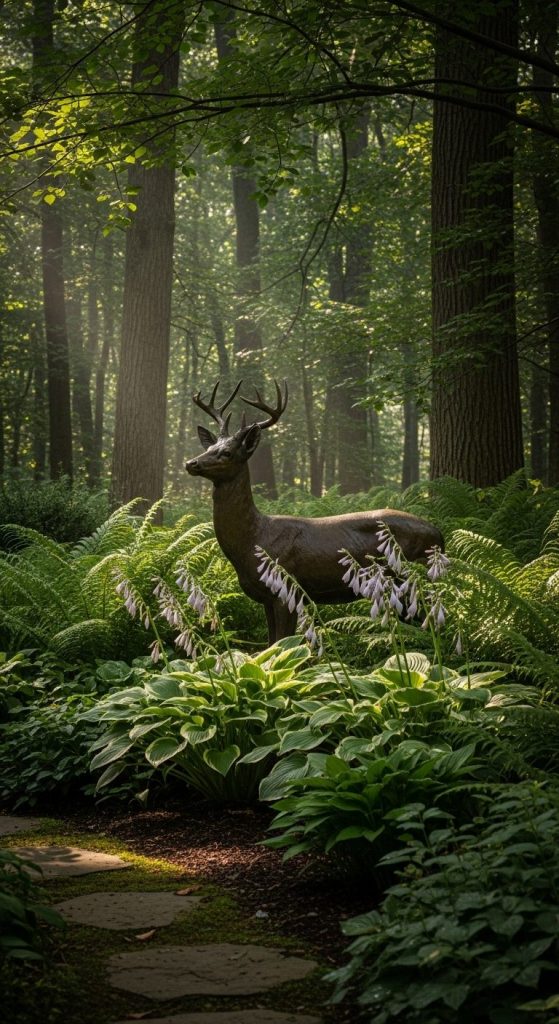
Ever noticed how a nicely done animal figure (bird, deer, fox) can add charm without being kitschy? Let’s bring that into play.
Pros:
- Adds whimsy and storytelling; great for family gardens.
- Works beautifully when placed among plantings, as if the animal is “in habitat.”
Cons:
- Risk of looking theme-park-ish if the piece is oversized or cartoonish.
- Some materials may require weather care (bronze, stone, etc.).
Takeaway:
Want personality with a wink? A figurative piece brings life (and story) to the garden.
5. Water-Feature Sculpture
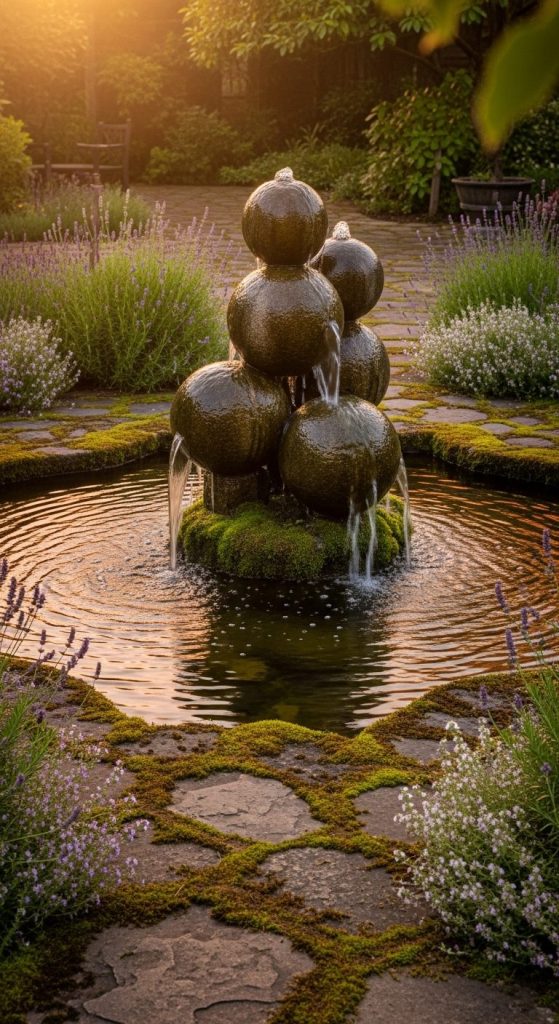
Combine form and function: sculpture that integrates water—like a fountain, waterfall wall, or sculptural spout.
Pros:
- Adds sound and motion, which elevate garden ambience.
- Doubles as a functional feature (recirculating pond, wall fountain).
Cons:
- Requires plumbing and ongoing maintenance.
- Needs cleaning (algae, filters, etc.) more often than dry sculptures.
Takeaway:
If you’re ready for a bit of effort, a water sculpture is one of the most immersive and luxurious garden features you can add.
6. Pedestal or Plinth-Mounted Sculpture
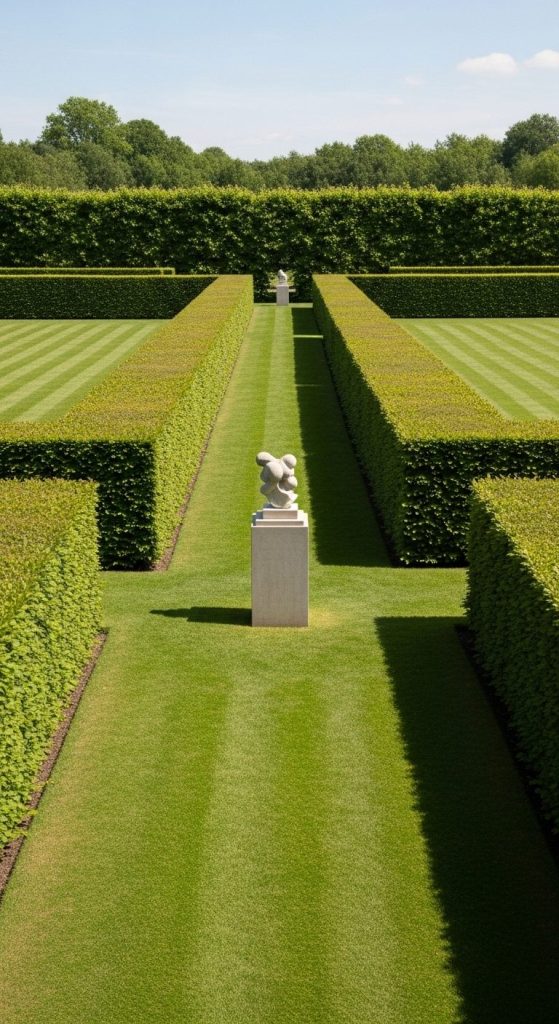
Rather than placing a sculpture directly on the ground, elevate it on a pedestal or plinth for dramatic effect.
Pros:
- Draws the eye upward, giving your sculpture prominence.
- Keeps it visible above plantings.
Cons:
- Pedestal design adds complexity—must be stable and complementary to surroundings.
- If too tall, can feel disconnected from the environment.
Takeaway:
For sculpture that “stands apart” yet still belongs, a plinth is the secret weapon.
7. Wall-Mounted Sculpture or Relief
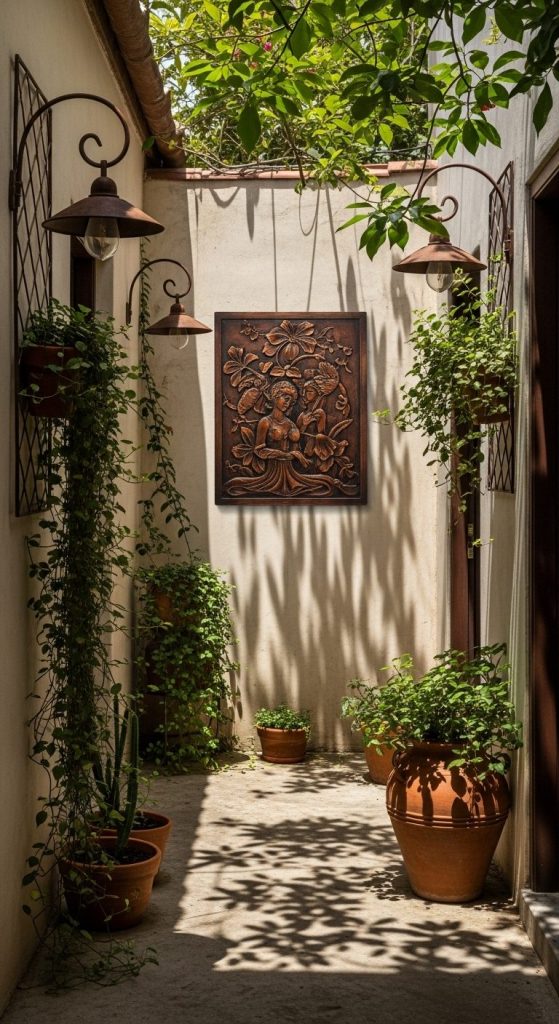
Not all sculptures need to stand alone. Wall pieces bring art to vertical spaces.
Pros:
- Maximises space, perfect for patios and courtyards.
- Adds visual texture to plain fences or garden walls.
- Can be mounted at eye-level for intimacy.
Cons:
- Requires secure, weather-proof installation.
- Can get lost visually if the wall already has heavy plant coverage.
Takeaway:
Got a blank wall or dull fence? Add a wall sculpture—it instantly elevates your outdoor design.
8. Integrated Plant-Sculpture Hybrid
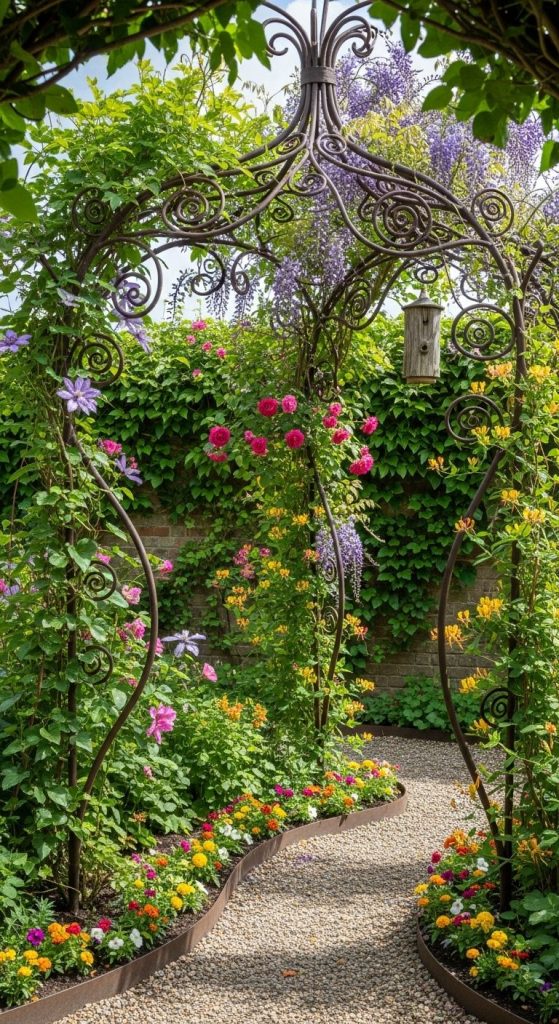
Here’s a fun twist—sculpture that grows with your garden. Think planters shaped like art, vines weaving through wire structures, or living topiary frames.
Pros:
- Combines art and nature in a single element.
- Feels alive and evolving throughout the seasons.
Cons:
- Requires balance—plants shouldn’t overpower the sculpture.
- Adds another layer of maintenance.
Takeaway:
If you love greenery and design equally, this hybrid keeps your garden ever-changing and full of life.
9. Rustic Natural-Material Sculpture (Wood or Stone)

Ditch the polished steel and embrace natural forms—weathered wood, stone carvings, or driftwood installations.
(StoneMart India notes stone sculptures and earthy tones are trending in 2025.)
Pros:
- Timeless and organic—fits seamlessly into naturalistic gardens.
- Materials age beautifully, adding character over time.
Cons:
- Wood requires treatment to prevent decay.
- Can blend in too much if surrounded by dense planting.
Takeaway:
Rustic sculpture bridges art and landscape—nature’s own masterpiece, reimagined.
10. Kinetic or Moving Sculpture
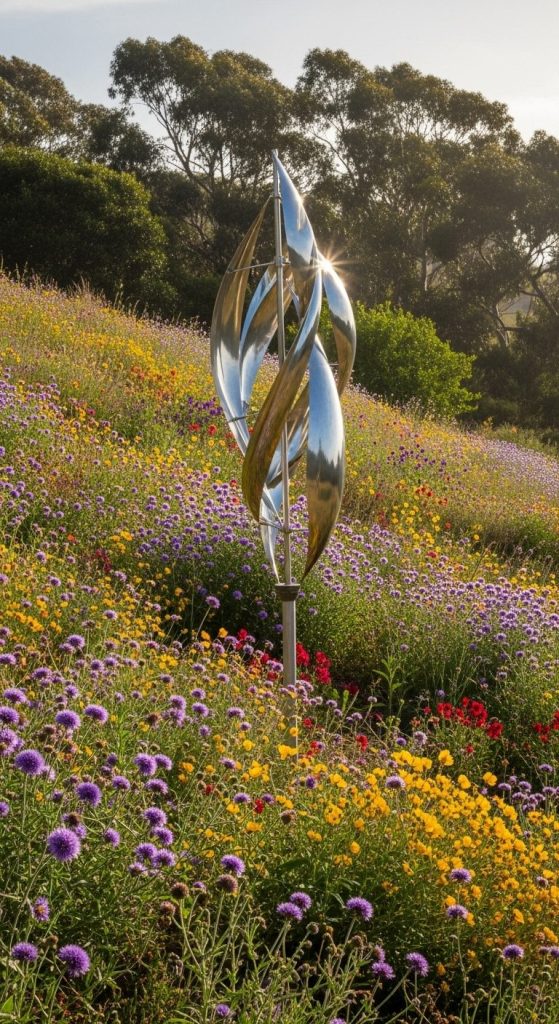
Add energy and life with wind-powered spinners, water-motion pieces, or subtle mechanical movement.
Pros:
- Dynamic and captivating—it changes as you move or as the wind blows.
- A guaranteed conversation starter.
Cons:
- Moving parts can need regular maintenance.
- Poor placement in strong wind areas may shorten lifespan.
Takeaway:
If your garden is meant to be experienced, not just viewed, kinetic art brings motion and magic.
11. Lights & Night-Time Sculpture
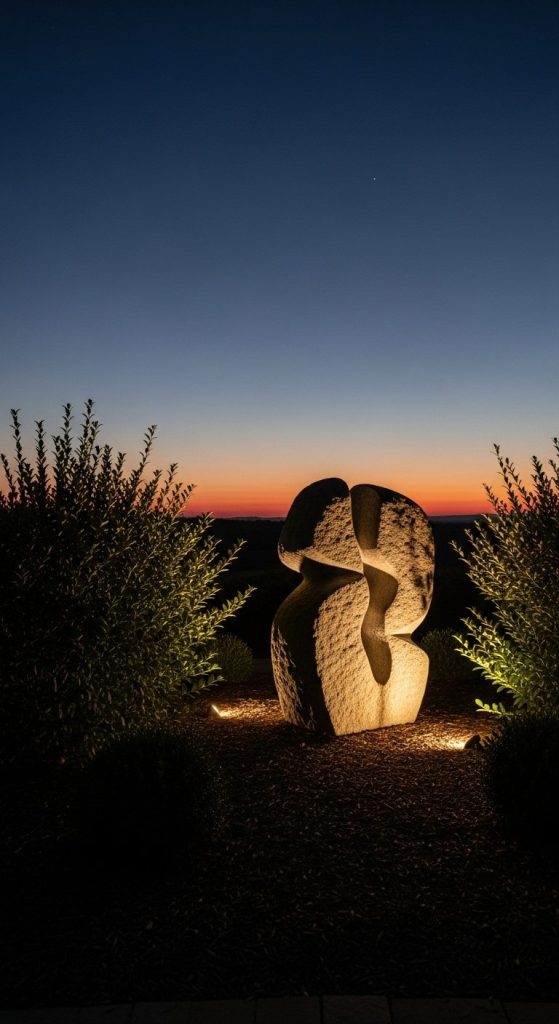
Why let your sculpture disappear at dusk? Light it up—literally.
Pros:
- Turns your garden into a night-time gallery.
- Highlights texture and form through shadow play.
Cons:
- Electrical setup adds cost and planning.
- Poorly designed lighting can create glare.
Takeaway:
Sculpture isn’t just a daytime affair. When lit right, it glows with personality after sunset.
12. Upcycled or Recycled-Material Sculpture
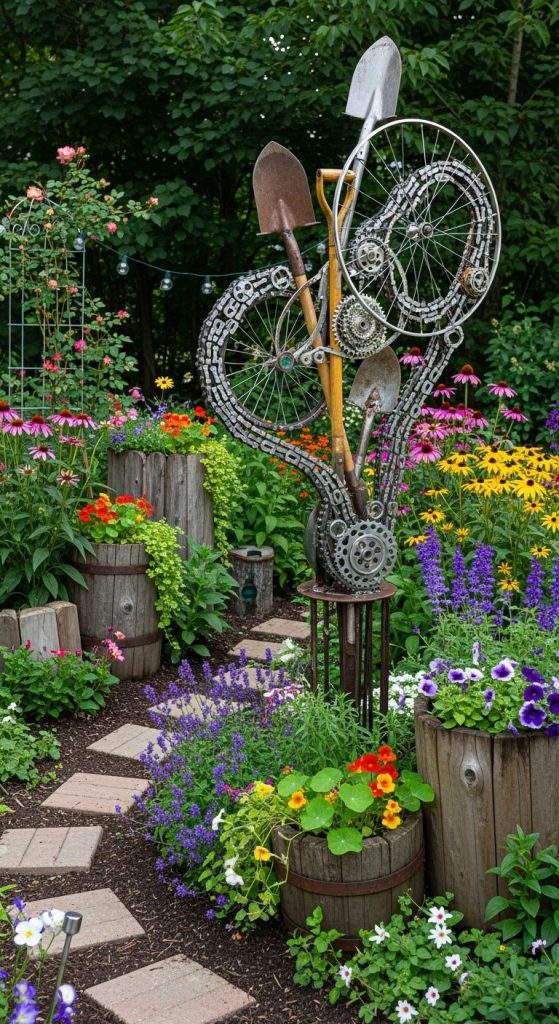
Get creative and sustainable—repurpose scrap metal, wood, or old tools into art.
Pros:
- Eco-friendly and budget-conscious.
- One-of-a-kind results that tell a story.
Cons:
- May require craftsmanship to avoid a “junkyard look.”
- Weather resistance can vary.
Takeaway:
Upcycled sculpture is sustainability with style—proof that creativity beats cost.
13. Sculpture Along a Garden Path
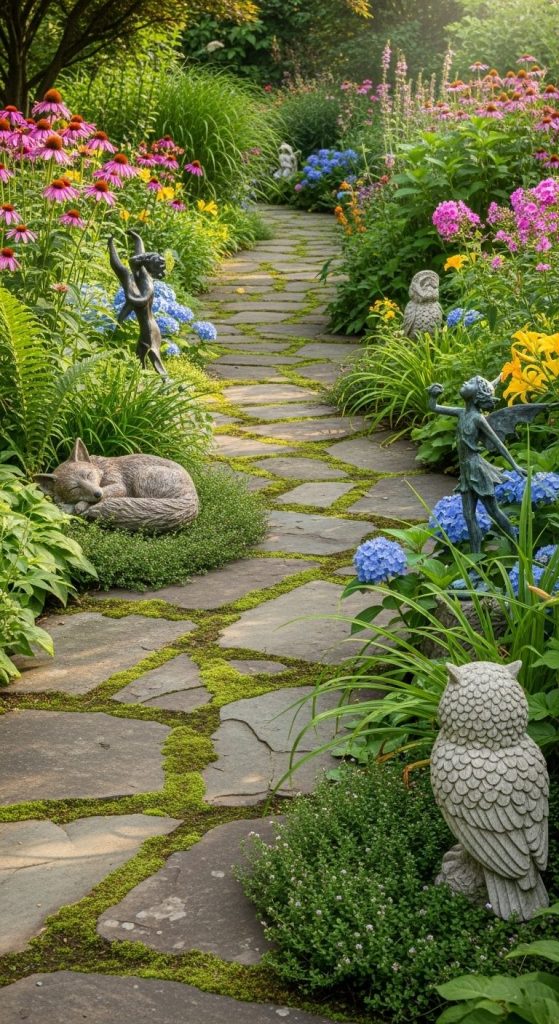
Turn your pathway into an art walk by placing smaller sculptures at intervals.
Pros:
- Encourages exploration—visitors discover pieces as they stroll.
- Perfect for winding or layered garden layouts.
Cons:
- Needs balance—too many can clutter, too few feel random.
- Small pieces risk getting lost among plants.
Takeaway:
Transform your path into a story. Let art guide each step.
14. Seasonal or Temporary Sculpture Displays
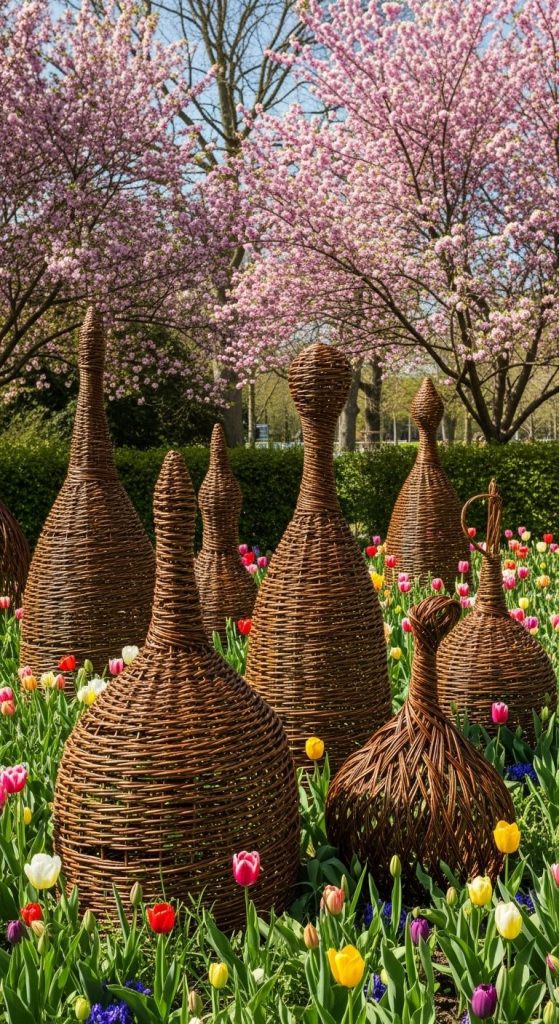
Who says garden art has to be permanent? Rotate or swap sculptures by season.
Pros:
- Keeps your garden fresh and dynamic.
- Lets you experiment with styles, materials, and placements.
Cons:
- Requires storage and planning for off-season pieces.
- Can feel less cohesive if not carefully curated.
Takeaway:
If you love change, make art part of your seasonal rhythm—new energy with every season.
15. Sculpture in a Functional Role (Furniture, Planter, Bench)

Art that you can sit on, plant in, or dine beside? Yes, please.
Pros:
- Practical and beautiful—you get furniture and art.
- Perfect for small gardens where space must multitask.
Cons:
- Functional sculpture often costs more to design and weatherproof.
- Needs balance—too practical, and it loses the “art” touch.
Takeaway:
For outdoor living at its best, choose pieces that are as useful as they are stunning.
Conclusion
We’ve just explored 15 garden sculpture ideas, from bold central statues to kinetic art and upcycled designs. Each idea brings a unique spirit—some dramatic, some understated—but all have the power to make your garden a living gallery.
Here’s the truth I’ve noticed wandering through sculpture-filled gardens: the best pieces don’t fight your plants; they complement them. They don’t shout; they whisper, “stay a while.”
Whether you choose a single striking figure or a series of small surprises along a path, art will change how you feel in your garden. It invites you to pause, reflect, and connect—because every garden deserves a little soul.
Here’s to sculptures that stop you in your tracks, make you smile, and give your outdoor space the story it deserves.

William Martin is a passionate bowler who spends most of his weekends playing the sport. With years of intense experience under his belt, William decided to share his knowledge by creating BOWLING OCEAN. Join me on this journey to explore the world of bowling and discover the tips and tricks to becoming a pro.

